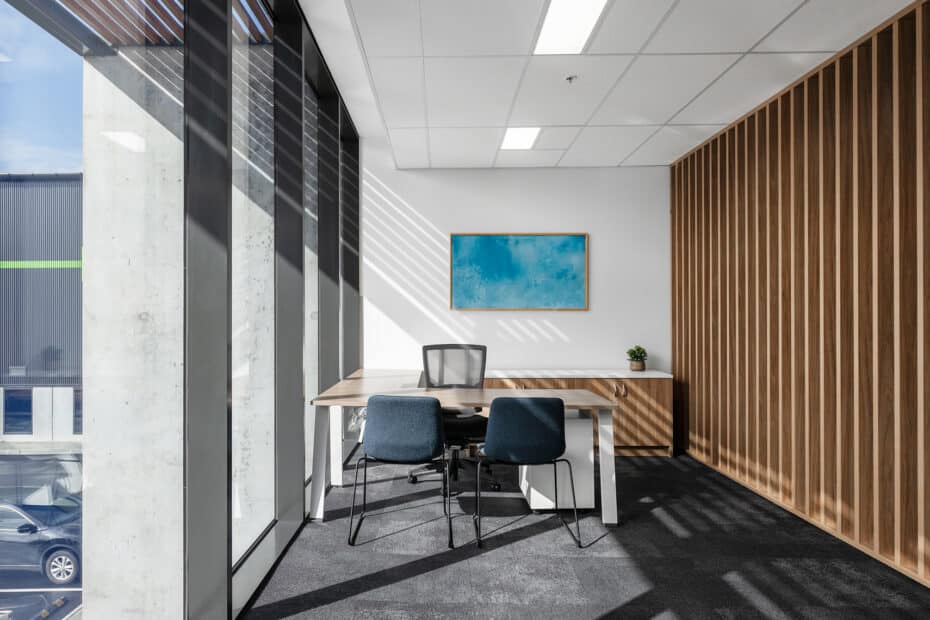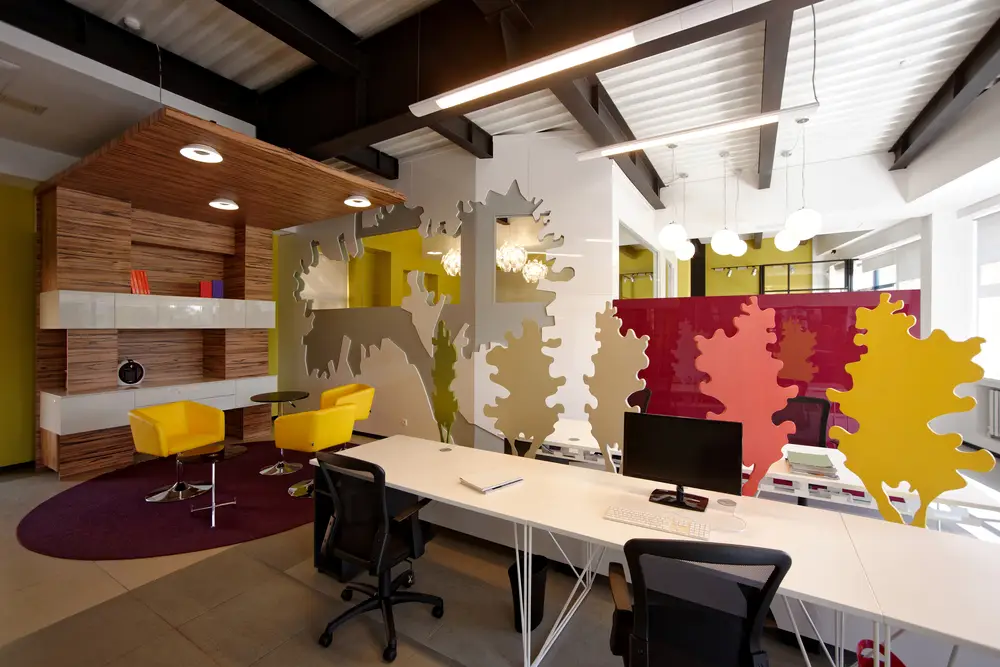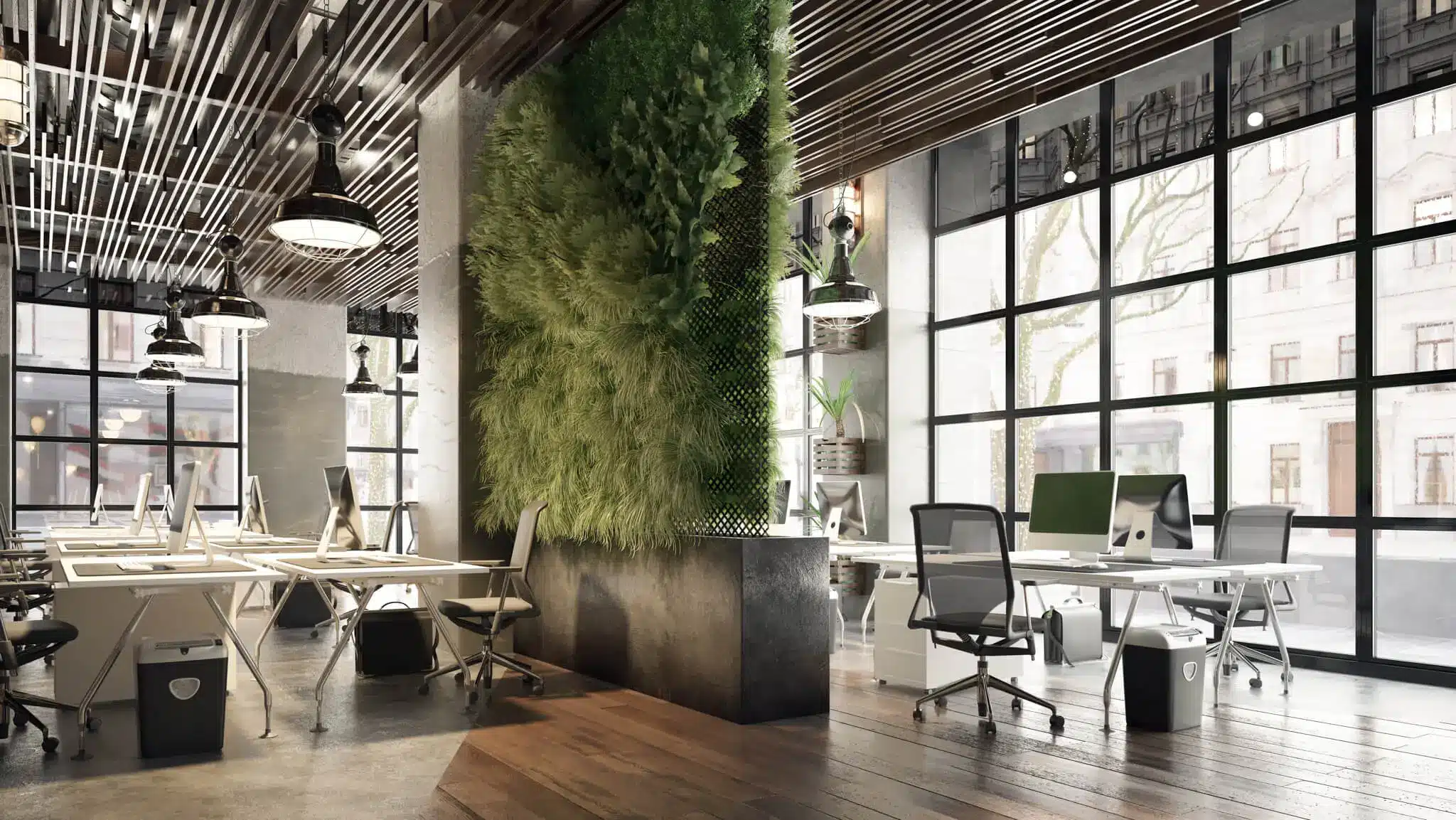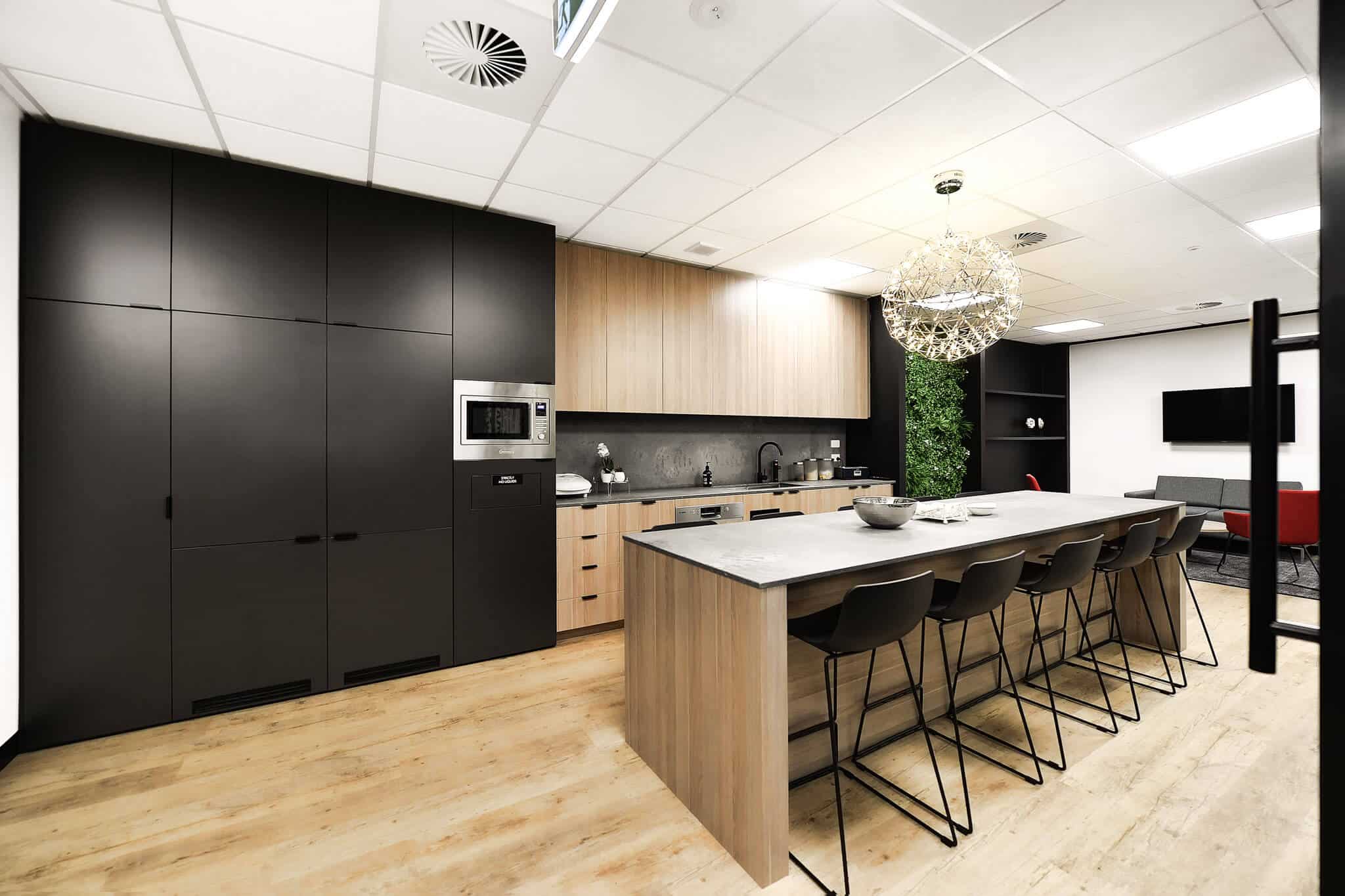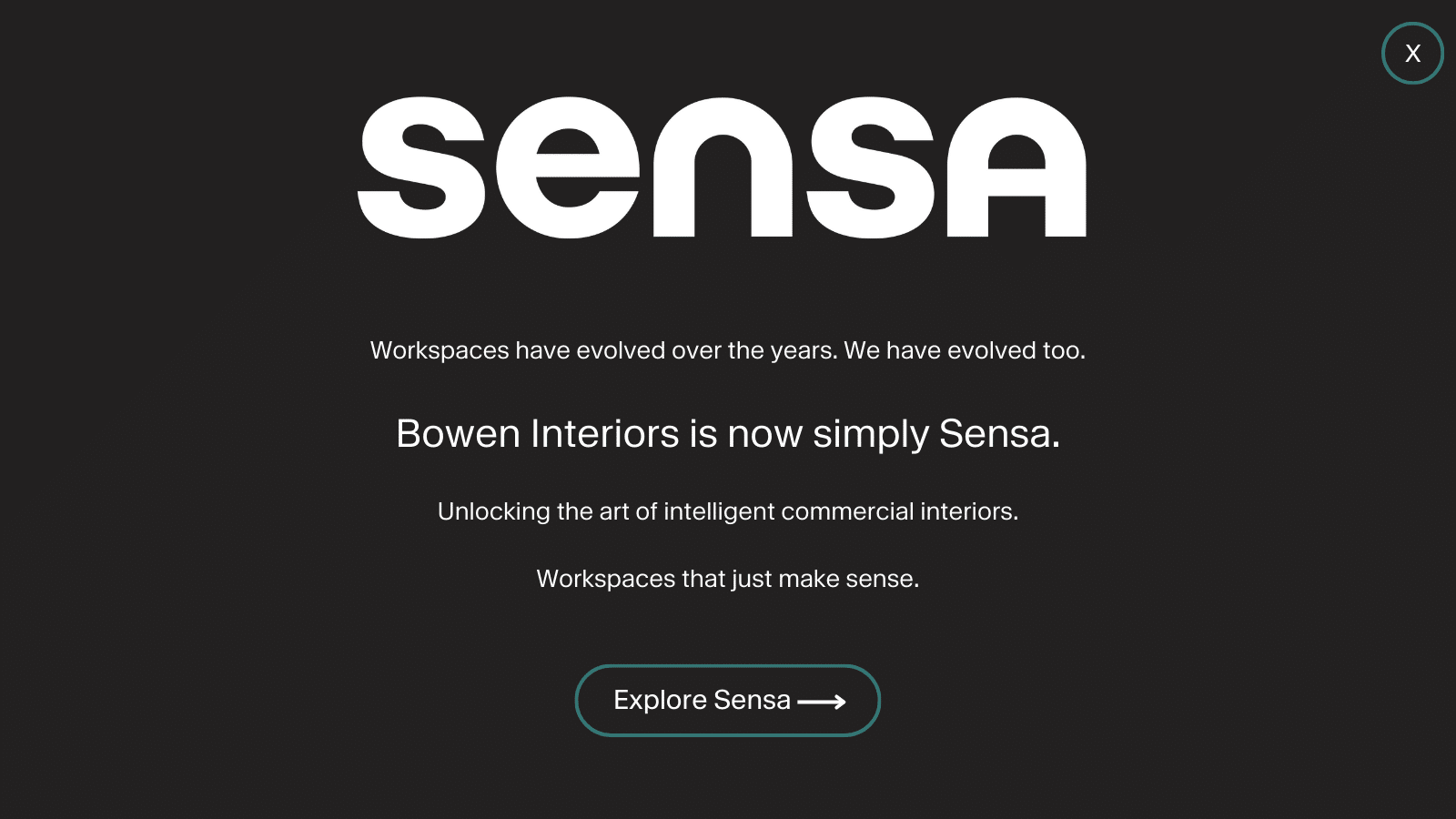2.1 Office as a cultural beacon
The fact is, business owners and managers are often inclined to value productivity at the expense of employee-centric principles. Yet, research shows how counter-intuitive this is.
More than half of employees won’t consider a workplace that doesn’t reflect their values. In a recent Qualtrics survey, 54% of employees said they would literally take a pay cut in return for a company that affirms their moral and social principles.
See your office as a statement of who you are as a brand. The design, ambiance, and vibe of the workspace should resonate with the company’s culture as well as your employee-centric stance and sustainability goals.
Whether it’s an art piece that speaks to the brand’s creative spirit, a communal space that fosters camaraderie, or green design that remembers the beauty of nature, every element should be a testament to your values.
When employees and clients step into the office, they should feel the brand’s essence enveloping them. If it aligns with their values, it will inspire, motivate, and energise them to work together for the benefit of the business.
2.2 Health, comfort, and well-being
Staff health and well-being have taken center stage since the pandemic. A modern office design recognises this shift and puts employee mental and physical wellness before all else. The good news is, it pays.
While traditional business managers might roll their eyes at the thought, the truth is that a mountain of research points to wellness being the foundation of quality work and productivity. We do better when we’re content and not too stressed–common sense should tell you this.
This could mean ergonomic furniture, spaces that allow for movement and breaks, or even designs that incorporate natural light, fresh air, and greenery. It’s about recognising that a healthy and happy employee is a productive, creative, and innovative one.
9 Common mistakes to avoid on your office fitout project
2.3 Safety and compliance
While aesthetics and functionality should never be overlooked, safety remains paramount.
A comprehensive workplace strategy ensures that the design adheres to all local fire, health, and safety regulations and both national and international standards.
This could mean ensuring proper fire exits, adhering to building codes, or even incorporating health and safety features in line with recent, unprecedented global events.
By prioritising safety, you not only protect the staff who are your most valuable asset, but you make them feel safe, which adds to wellness, and you ensure smooth operations without legal hiccups.
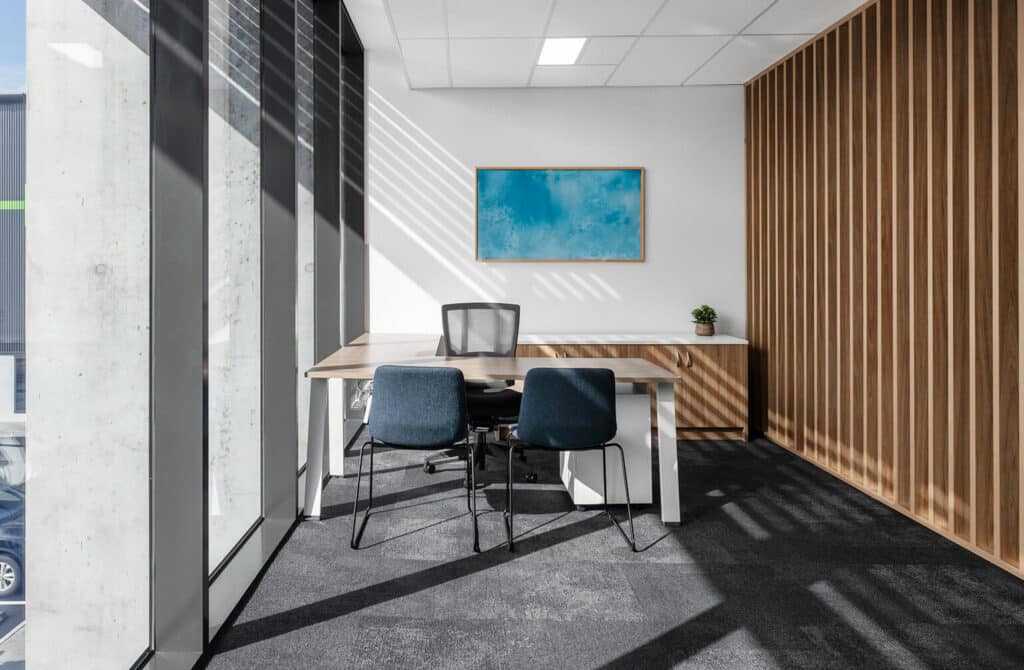
2.4 Sustainability and eco-conscious design
As a business owner and direct or indirect leader of people, sustainability is your obligation. You should recognise the importance of eco-friendly practices, and this includes the practice of updating your office design.
An eco-conscious workplace strategy means using sustainable materials in your design and furnishings, incorporating energy-efficient lighting, and maximising natural positives like light, airflow, and greenery.
It also means reducing the carbon footprint of the office, starting at the installation phase and continuing into your daily office processes. This is how you muster a space that employees can feel truly proud of.
What’s more, although initial costs are sometimes a little higher, sustainable practices almost always drive long-term cost savings, so it’s a win-win for your business.
2.5 Cost effectiveness and long term planning
Every business decision, including office design, has financial implications, and not just in the immediate, but also in the long term.
Strategic workplace design and outfitting ensure that resources are used efficiently, leading to long-term cost savings that have added psychological and ergonomic benefits. This doesn’t mean cutting corners but making informed decisions that offer the best value moving forward.
Imagine buying a non-sustainable, flimsy, cookie-cutter office desk at low cost that wears down and needs to be replaced regularly. Now imagine a natural wood, sustainably sourced but slightly dearer desk that looks better with age and almost never needs to be replaced.
The latter option looks and feels better–it’s more appealing to the person who uses it and to everyone who sees it, and it also saves you the cost of a new flimsy desk every 3 to 5 years. There are multiple long-term benefits to not cutting costs at the onset.
Whether it’s choosing durable materials that reduce the need for frequent replacements or designing spaces that can be easily reconfigured for different needs, cost-effectiveness is critical to any comprehensive workplace strategy.
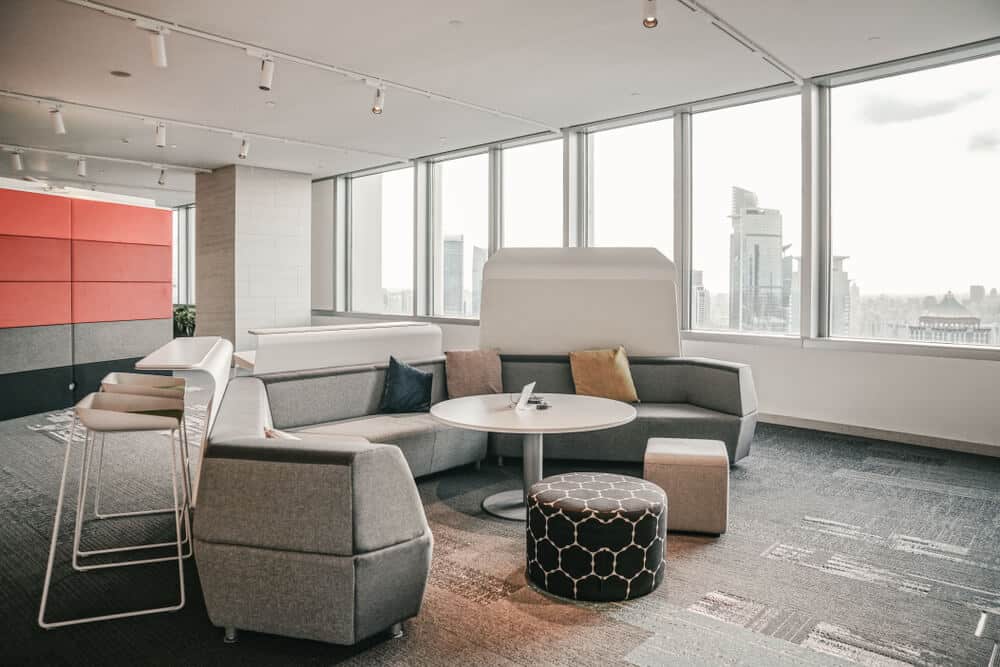
2.6 Spaces for diverse needs
Diversity and inclusion are essential factors for modern businesses. A well-thought-out office design recognises the diverse needs of its workforce in a way that facilitates each and every employee.
This could mean creating quiet zones for focused and individual work, collaborative spaces for pair or team projects, and relaxed spaces for a quick rest on their backs and reclining while working on a laptop.
It could mean spaces that are tactile, visual, and auditorily considered, with wheelchair-friendly design. It’s about ensuring that every employee, regardless of their work style or needs, has a space where they can thrive.
2.7 Power of branding in design
Your office is an extension of your brand. Every design and fitout choice you make, from the colour palette to the artwork, should resonate with your brand’s identity.
A strategic workplace design ensures that the office not only functions efficiently, facilitating worker well-being and company growth but also serves as a powerful branding tool.
When employees, clients, or partners walk in, they should instantly connect with your brand, seeing its principles, vision, goals, and uniqueness on display.
It’s cultivating a cohesive brand experience that exists in more than just a company mission statement or speech. The physical space should passively and actively tell your brand’s story every single day, inspiring workers to be a part of something bigger than the sum of its parts.


